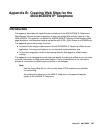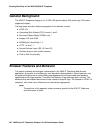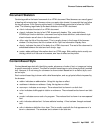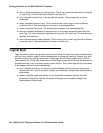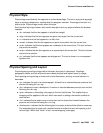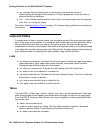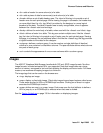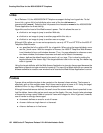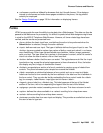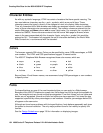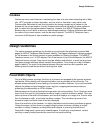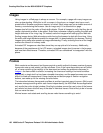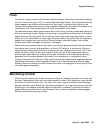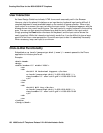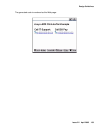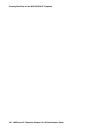
Browser Features and Behavior
Issue 2.2 April 2005 133
● <noframes> provides a fallback for browsers that don’t handle frames. If the designer
intends to use frames and make these pages available to the phone, this tag should
certainly be employed.
See the Design Guidelines
on page 135 for information on displaying frames.
Forms
HTML forms provide the user the ability to enter data into a Web browser. This data can then be
passed to the Web server for processing. It is difficult to predict what Web designers might have
in mind for the 4630 IP Telephone Web Browser. However, all forms-related tags have been
verified, and the results are presented here.
● <form> defines the basic input form, and defines the action to be performed when the
Submit button is selected, through the action attribute.
● <input> defines most user input. The type of attribute defines the type of input to use. The
<button> tag was created to replace type values of button, reset and submit, in a cleaner,
more flexible way. Other type values available are checkbox, hidden, image, password,
radio, and text. The type value file is useless in this browser’s context, since this control’s
intent is to allow the user to select a file on their local disk.
● <button> defines a button that the user can select. This tag behaves much like the <input
type=button> tag, except the physical appearance is three-dimensional. Also, the button
can display any text, image, or combination thereof.
● <fieldset> encapsulates a section of a form's contents to create a group of related form
controls. The phone's browser puts a simple box around the fieldset.
● <label> associates a relationship between a form control and one or more text labels.
Labels can be tied to form controls by the form attribute in the label and the id attribute in
the form control. They can also be tied by embedding the form control inside the <label>
tag, for example, <label>Name: <input type=text id=name></label>.
● <legend> gives a label to a <fieldset> tag. This label appears at the top of the fieldset
section of the form, with a line separating the legend from the rest of the fieldset.
● <optgroup> provides nested, cascading menus to the user. This does not seem to work.
● <option> defines the values available in a <select> scrolling list or drop-down menu.
● <select> defines scrolling lists and drop-down menus.
● <textarea> provides free-form user input and display. This provides a scrolled text area for
the user to read or type text.



